Copper vs PEX Plumbing: Which is Best for My Home?
As homebuilders, we know that there’s no singular solution proven to work best for every house. Instead, all building materials, technologies, and...
2 min read
Meadowlark Design+Build : Sep 19, 2022
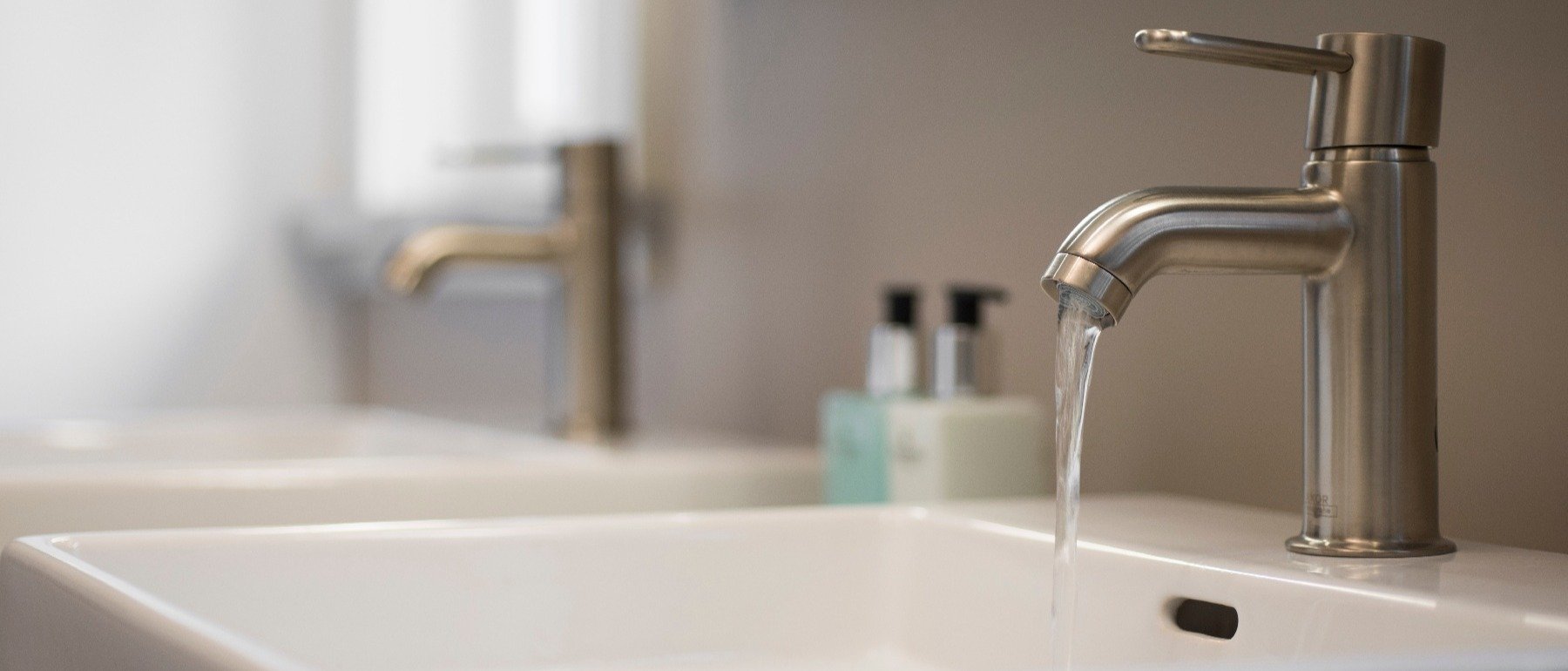
Over the years, our homes have become larger, which inherently means more bathrooms and longer plumbing runs. This has made more homeowners think critically about the efficiency of their plumbing system.
If you’re one of those homeowners, you might have researched and run across manifold plumbing systems. We’ll talk more about those below and evaluate how they compare to traditional plumbing systems in terms of efficiency.
Your plumbing system won’t be the most glamorous aspect of your custom home build or renovation, but it will be an important one. Below we walk through traditional vs. manifold plumbing systems and some important things to consider before implementing one or the other.
A traditional plumbing system uses a ¾” diameter pipe, or even larger if you have a big home. Then it makes a circuit around your house with smaller, ½” diameter pipes that divert and supply individual fixtures.
Some advantages of traditional plumbing system design? It’s been around forever, you won’t find a plumbing contractor that doesn’t know how to install it, and it’s usually a little cheaper.
However, traditional plumbing systems are inherently flawed in terms of energy and resource efficiency. The main, large-diameter pipe takes more than twice the amount of hot water to supply a remote fixture than a smaller, ½” diameter pipe. Especially when coupled with an inefficient water heating system, it results in an energy and water equation that works against you as a homeowner.
A manifold plumbing system uses ½” take-offs that are close to your home’s hot water supply. This eliminates the need to clear out the ¾” diameter pipe before getting hot water to an individual fixture. Here are some photos of what a manifold plumbing system looks like:
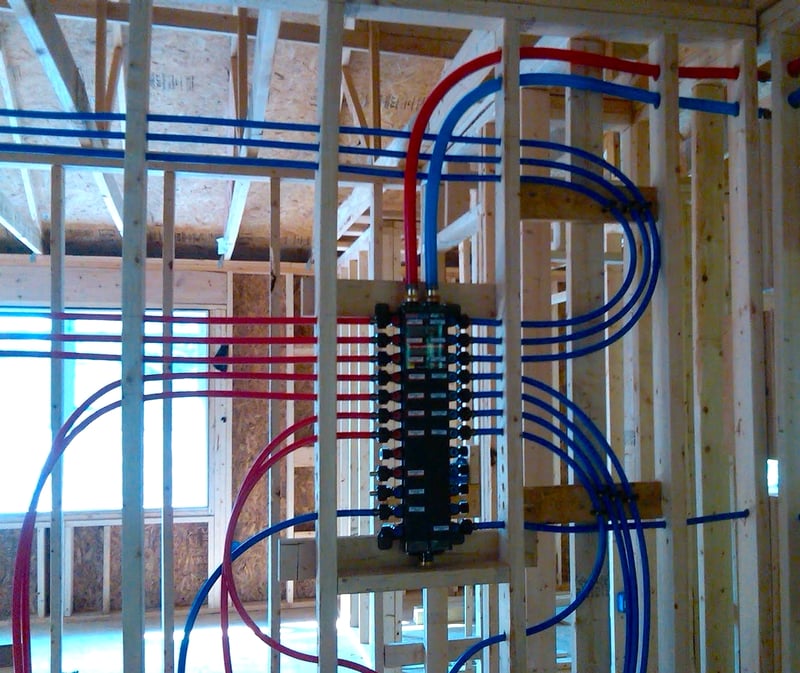
Manifold plumbing systems aren’t new by any means, but they’re newer than traditional plumbing system design. For this reason, they may be a bit more expensive to install, but the cost is well worth it and pays for itself in the long run.
A manifold system’s individual ½” runs use a lot less water and save quite a bit of energy. This is because the user doesn’t have to clear out a ¾” diameter line before hot water reaches a fixture. Saving water and some of the energy it takes to heat it results in lower utility bills every month.
Manifold plumbing systems are much more efficient than traditional plumbing systems. They use less water and require less energy to heat said water. They’re a small, but mighty addition to any custom home or renovation.
A way to maximize the efficiency of your manifold plumbing system? PEX tubing. PEX tubing is a type of plastic tubing made from high-density polyethylene (HDPE). It’s flexible, acid-resistant and less prone to mineral build up. Its flexibility allows for rounded bends instead of 90 degree corners that traditional plumbing materials utilize. This flexibility creates less water turbulence than other forms of tubing and thus more efficient flow through the pipes. These features make it the ideal choice for any manifold plumbing system. You can even use red- and blue-colored PEX to signify hot and cold water, and you can bundle the lines as they snake through your house.
If a manifold plumbing system seems like a good addition to your custom home or remodel, get in touch with our green building experts at Meadowlark Design+Build. We’re here to offer energy- and resource-efficient solutions that work for you and for our planet.
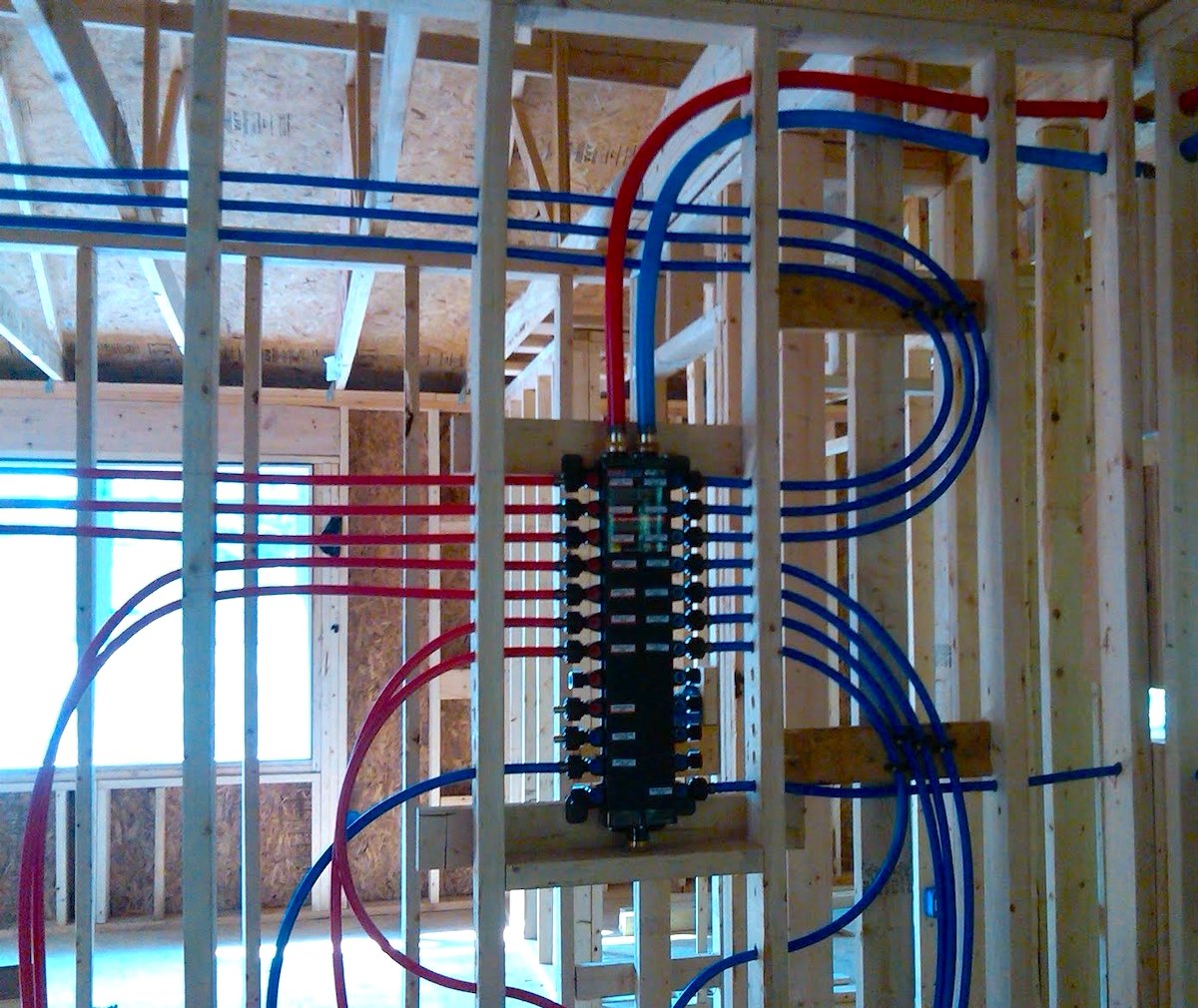
As homebuilders, we know that there’s no singular solution proven to work best for every house. Instead, all building materials, technologies, and...
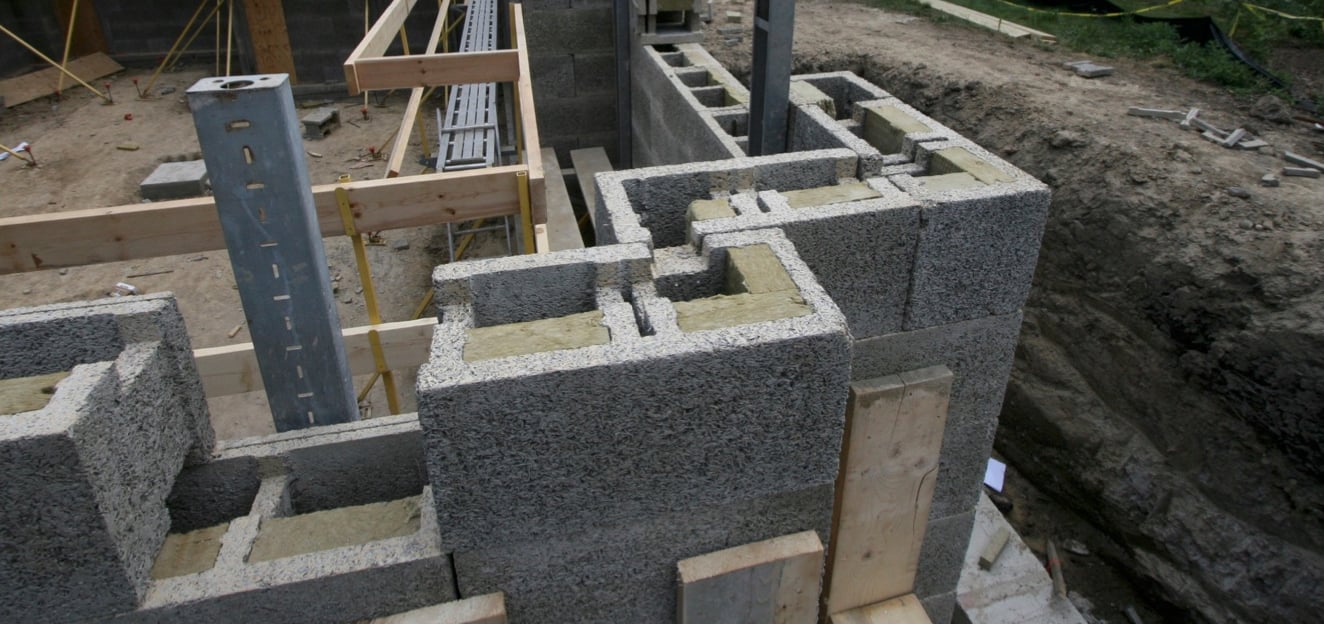
Nowadays, there are many advanced building techniques and technologies out there for you to choose from. And while many of them are great...
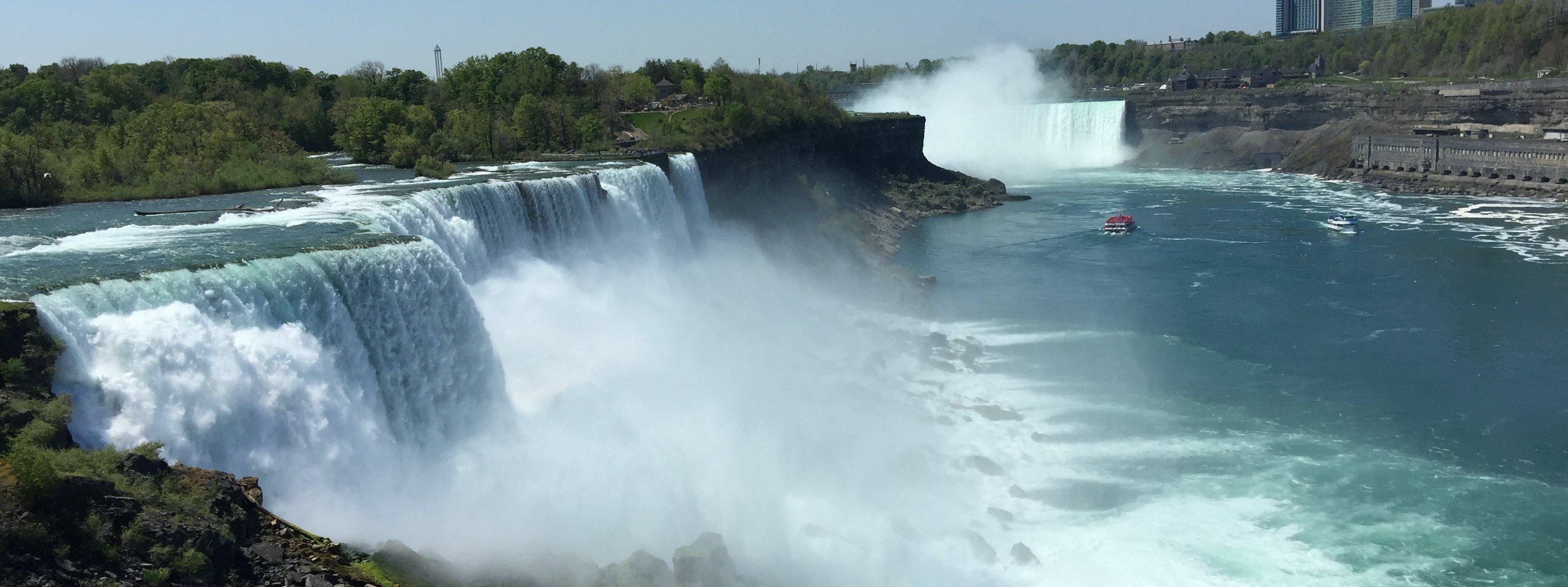
In urban areas, stormwater management is a huge issue. Countless roads, parking lots, and driveways provide impervious surfaces for stormwater to run...